Tags
classic children's books, cocoa, Dessert, drinks, homemade marshmallow, hot chocolate, kid's books, literary criticism, literature, marshmallow, recipes, the polar express, winter recipes
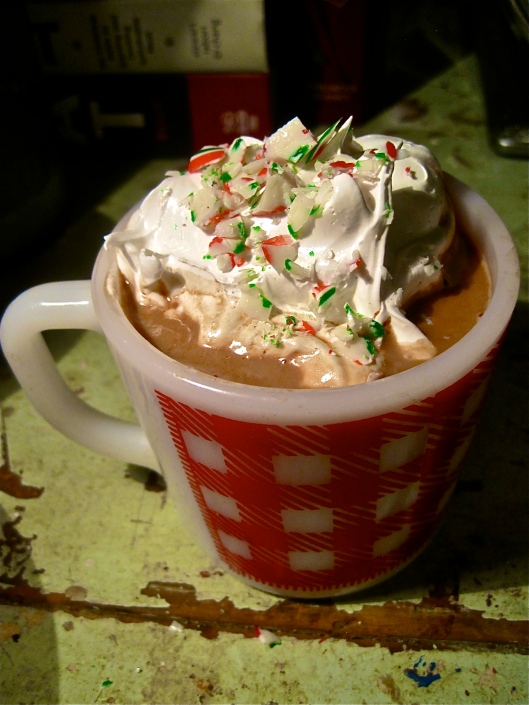 One of the little boys I babysit for has, in the last few weeks, become completely obsessed with trains. At only four-years-old he has the New York City subway map memorized and can tell you a variety of ways to get to Times Square from wherever you are, what trains you can transfer to at Union Square, which trains run express and which ones local–something that, after almost ten years living here I still mess up daily. It seems like the train-loving phase is one that most little boys go through at one point or another and I find comfort in the fact that, in a day when seven-year-olds have their own iPhones, a child can still be awed by a technology invented in 1784.
One of the little boys I babysit for has, in the last few weeks, become completely obsessed with trains. At only four-years-old he has the New York City subway map memorized and can tell you a variety of ways to get to Times Square from wherever you are, what trains you can transfer to at Union Square, which trains run express and which ones local–something that, after almost ten years living here I still mess up daily. It seems like the train-loving phase is one that most little boys go through at one point or another and I find comfort in the fact that, in a day when seven-year-olds have their own iPhones, a child can still be awed by a technology invented in 1784. 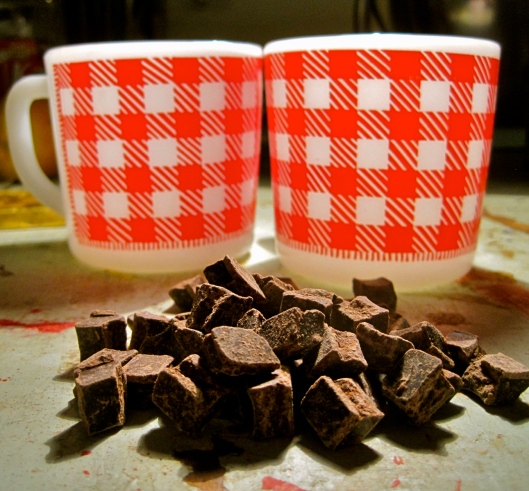 As much as I respect Arlo’s newfound obsession, it has made agreeing on a bedtime book very hard. His older brother, Max, has long since moved on from his own train fixation and, understandably, doesn’t want to hear about signaling systems and high-platform loading before falling asleep. Max is an avid reader and reminds me a lot of myself as a kid—he craves adventure and magic, something to get his imagination working and his heart racing, something that will make his dreams bizarre and spectacular.
As much as I respect Arlo’s newfound obsession, it has made agreeing on a bedtime book very hard. His older brother, Max, has long since moved on from his own train fixation and, understandably, doesn’t want to hear about signaling systems and high-platform loading before falling asleep. Max is an avid reader and reminds me a lot of myself as a kid—he craves adventure and magic, something to get his imagination working and his heart racing, something that will make his dreams bizarre and spectacular.
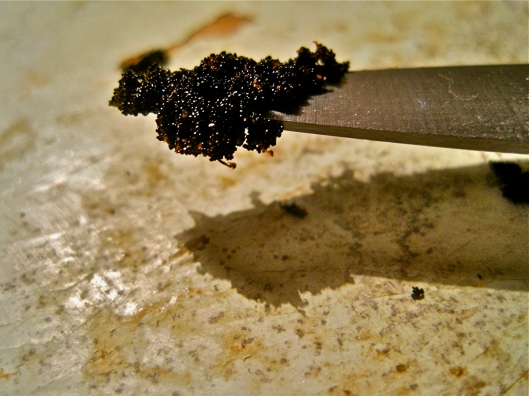
The other night, with the clock quickly pushing toward “really past your bedtime” and my patience wearing thin, I saw The Polar Express pushed to the back of the bookcase, shining like a beacon of hope. Miraculously, the boys agreed to it, and for the next twenty minutes were absolutely entranced. Van Allsburg’s drawings remain, to this day, some of the best children’s book illustrations of all time–there is a softness to them that is both comforting and quietly eerie.
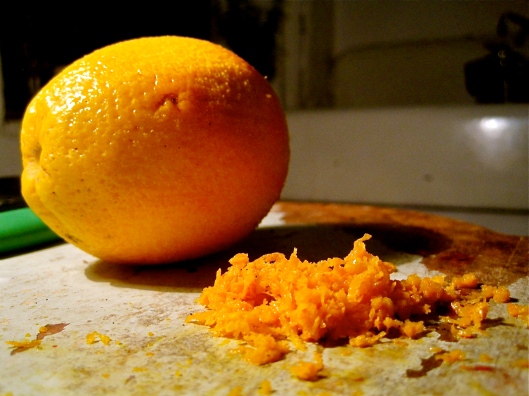 The Polar Express received rave critical reception when it was published in 1985. It won the Caldecott Medal for children’s literature in 1986 and continues to make the School Library Journal’s list of “top 100 children’s books of all time” every year. It wasn’t until the movie adaptation came out in 2004 that people’s opinion of the story began to change. The huge-budget CGI movie, in which every grown-up has the ever-comforting and familiar voice of Tom Hanks and every child the blank stare of a zombie, incited criticism from publications like The New York Times for its eerie similarities to Reifenstahl’s Nazi propoganda film, “The Triumph of the Will.” Websites dedicated to outlining the similarities of Santa and Hitler popped up everywhere, changing many readers’ perception of the book forever.
The Polar Express received rave critical reception when it was published in 1985. It won the Caldecott Medal for children’s literature in 1986 and continues to make the School Library Journal’s list of “top 100 children’s books of all time” every year. It wasn’t until the movie adaptation came out in 2004 that people’s opinion of the story began to change. The huge-budget CGI movie, in which every grown-up has the ever-comforting and familiar voice of Tom Hanks and every child the blank stare of a zombie, incited criticism from publications like The New York Times for its eerie similarities to Reifenstahl’s Nazi propoganda film, “The Triumph of the Will.” Websites dedicated to outlining the similarities of Santa and Hitler popped up everywhere, changing many readers’ perception of the book forever.
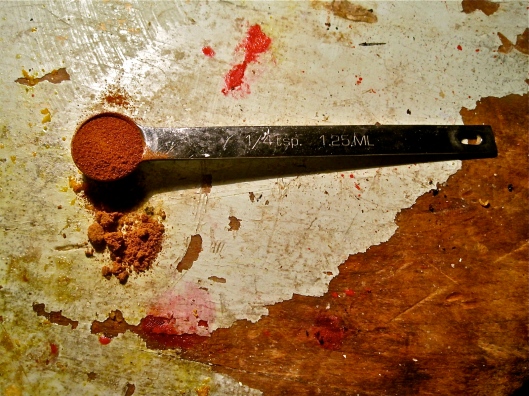 I wasn’t aware of any of these criticisms until I decided to look up critical reception of the book after reading it to Max and Arlo last week. I had forgotten what a strange, uneasy feeling the book had given me in my guts as a kid, I always sort of dreaded my dad’s reading of it around Christmas time. I couldn’t get past the fact that the book’s main character isn’t at all weirded out when a creepily old-fashioned train pulls up outside of his bedroom window and a conductor–a man he does not know–starts beckoning to him from it. What’s more, this nameless main character leaves the comfort of his bedroom and hops right onto the train, which is full of children, all lured from their homes in the middle of the night to take a trip to a very far away place.
I wasn’t aware of any of these criticisms until I decided to look up critical reception of the book after reading it to Max and Arlo last week. I had forgotten what a strange, uneasy feeling the book had given me in my guts as a kid, I always sort of dreaded my dad’s reading of it around Christmas time. I couldn’t get past the fact that the book’s main character isn’t at all weirded out when a creepily old-fashioned train pulls up outside of his bedroom window and a conductor–a man he does not know–starts beckoning to him from it. What’s more, this nameless main character leaves the comfort of his bedroom and hops right onto the train, which is full of children, all lured from their homes in the middle of the night to take a trip to a very far away place.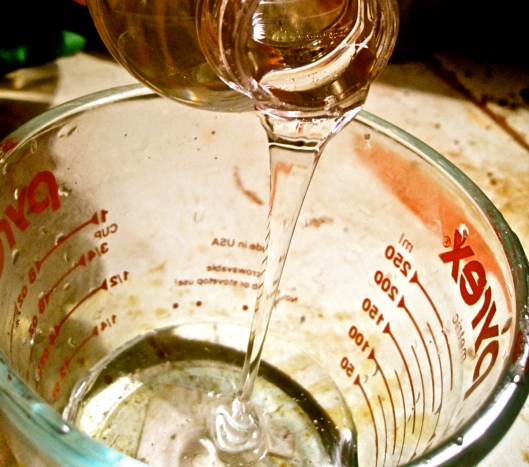
One thing that I did love about the book, however, was the description of the hot chocolate that the kids drink while on board the train—hot chocolate that is “as rich as melted chocolate bars.” This was something I could really get down with. Hot chocolate played a huge role in one of my most favorite Christmas traditions. Every year, my dad would take me and my sisters Christmas shopping, one at a time, in the three days immediately before Christmas. Getting to spend an entire evening with my dad without my sisters was very exciting. We walked around looking at all the Christmas lights, talking about school and books and carefully choosing gifts for my mom and each of my sisters.
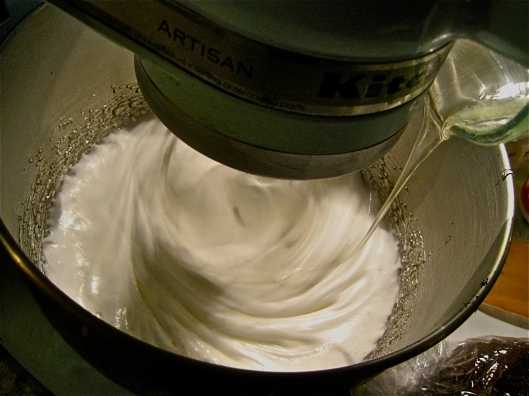 What I liked best about this tradition, though, was that when we were done shopping my dad always bought me a fancy hot chocolate from Au Bon Pain. Before my dad introduced me to the fancy stuff I was used to Dunkin Donuts hot chocolate–thick and overly-sweet, coming out of a machine with the push of a button, or the gritty, artificial packets of Swiss Miss that my sisters and I always stirred into water and zapped in the microwave, so at first I wasn’t sure if I liked this serious, grown-up version of hot chocolate. Soon though, I began to crave the bittersweet chocolate, the milk scalded by the handsome, teenage barista until it was almost burnt. Hot chocolate is, today, still one of my most favorite treats, and it never fails to bring me comfort. This is a recipe I created during my pastry days at Colonie. It became a tradition to make big, steaming mugs of it to get me and my fellow cooks through the freezing, two-hour-long Sunday evening walk-in-refrgerator deep-clean, which strangely, is one of my most favorite memories of my days working there.
What I liked best about this tradition, though, was that when we were done shopping my dad always bought me a fancy hot chocolate from Au Bon Pain. Before my dad introduced me to the fancy stuff I was used to Dunkin Donuts hot chocolate–thick and overly-sweet, coming out of a machine with the push of a button, or the gritty, artificial packets of Swiss Miss that my sisters and I always stirred into water and zapped in the microwave, so at first I wasn’t sure if I liked this serious, grown-up version of hot chocolate. Soon though, I began to crave the bittersweet chocolate, the milk scalded by the handsome, teenage barista until it was almost burnt. Hot chocolate is, today, still one of my most favorite treats, and it never fails to bring me comfort. This is a recipe I created during my pastry days at Colonie. It became a tradition to make big, steaming mugs of it to get me and my fellow cooks through the freezing, two-hour-long Sunday evening walk-in-refrgerator deep-clean, which strangely, is one of my most favorite memories of my days working there.
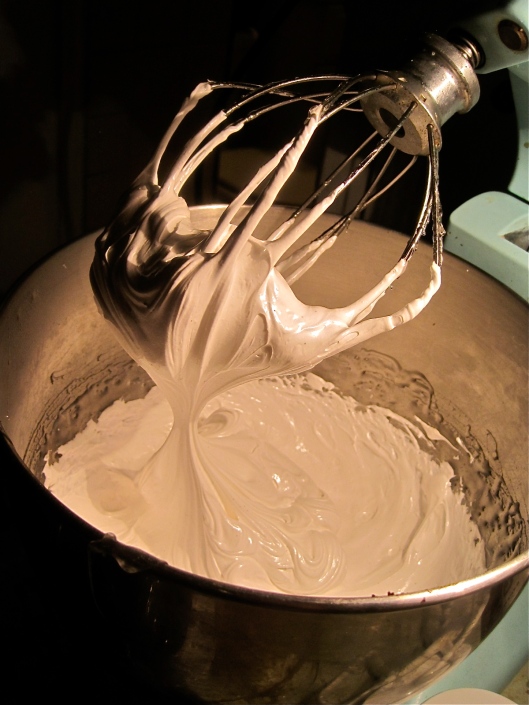
Chocolate Orange Ganache
This recipe makes a pint of ganache that can be scooped into your mug and doused in scalded milk (or cream if you’re feeling dangerous) whenever you have a hankering for hot chocolate. My mom always used to put chocolate oranges in our stockings at Christmas, so I have a real soft spot for that flavor combination. If you don’t, feel free to skip the orange zest and juice, but do try it once before you skip it—it’s fancy and delightful.
I love this method because it keeps forever and easily makes a single serving, which makes it dangerously simple to always have a very decadent treat on hand. It also makes a great gift for anyone you love or are trying to make fat.
Ingredients:
- 8 ounces (1 cup) heavy cream
- 1 ½ teaspoons good vanilla extract
- 2 vanilla beans
- 12 ounces (1 ½ cups) good semi-sweet chocolate chunks or chips
- zest of 1 orange plus 2 tablespoons of juice
- 2 teaspoons cinnamon
- 1 teaspoon cayenne pepper
- ½ teaspoon freshly-grated nutmeg
- ¼ teaspoon ground cardamom
- Milk or cream to scald and mix with ganache
Directions:
Pour cream into a medium saucepan and add vanilla extract. Split vanilla beans lengthwise, scrape seeds into the cream and place pods in the cream as well. Place chocolate in a heat-proof bowl with orange zest, juice, and spicing and set aside. Scald cream over medium heat (scalding comes just before boiling, watch for small bubbles forming around the edge of the saucepan and steam rising from the cream’s surface). Once scalded pour cream over chocolate and let stand for 30 seconds. After 30 seconds whisk chocolate and cream together until smooth and shiny. At this point the ganache will be the texture of chocolate syrup but once it’s refrigerated overnight it will firm up to a soft, scoopable, fudge-like texture. For a single serving of cocoa, add about 2 teaspoons of ganache (or however much you like) to a mug, scald a cup of whole milk or cream, and pour it into the mug over the chocolate. Stir and top with marshmallow fluff (recipe follows). Store the rest of the ganache in the refrigerator, it will keep up to two months.
Vanilla Bean Marshmallow Fluff
Marshmallow fluff is a childhood staple—or it was for me, at least. We ate it with absolutely everything growing up and corrupted more than one neighborhood kid whose parents wouldn’t allow them to have sugar. We didn’t have very interesting toys, but man did we have fluff. As much as I love the supermarket stuff, making it from scratch is a giant improvement. Don’t be scared by the boiling sugar and the candy thermometer, making it is insanely easy and hugely impressive.
Makes 1 quart
Ingredients:
- ¾ cups sugar
- ½ cup corn syrup (light)
- ¼ cup water
- 1/8 teaspoon salt
- 2 large room-temperature egg whites
- ¼ teaspoon cream of tartar
- 1 ½ teaspoons good vanilla extract
- seeds of 2 vanilla beans
Directions:
In a medium, heavy-bottomed saucepan stir together sugar, corn syrup, water and salt. Fit saucepan with a candy thermometer. Before turning stove on, mix together egg whites, cream of tartar, vanilla and vanilla bean seeds in the bowl of a mixer fitted with a whisk attachment. Turn mixer to medium-high and return to stove to boil your sugar mixture. Heat until thermometer reaches 240 degrees Fahrenheit. At this point your egg whites should be whipped to soft peaks (if you notice that your egg whites are whipping faster than your sugar is boiling simply turn the mixer off and resume when the sugar syrup is getting closer to temp). Once syrup is at 240 and egg whites are holding soft peaks, pour sugar syrup into a vessel with a spout, such as a measuring cup, for easy pouring (be very careful, hot sugar syrup is not something you want to splash on yourself). With the whisk on the mixer running at medium, very very slowly pour about 2 tablespoons of sugar syrup to allow the whites to come to temp without scrambling. Once those two tablespoons are incorporated you can pour the remainder of the syrup in in a slow and steady stream. Continue whipping until mixture is glossy and holding medium-stiff peaks (or until it looks like marshmallow fluff!). Serve immediately with hot chocolate or refrigerate—will keep for up to one month.

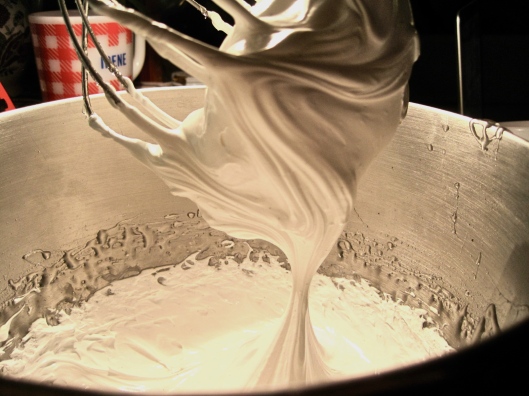
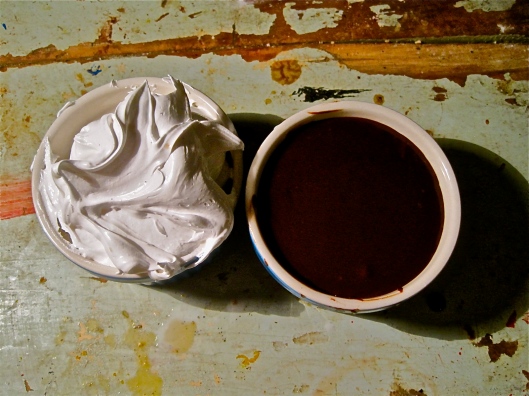
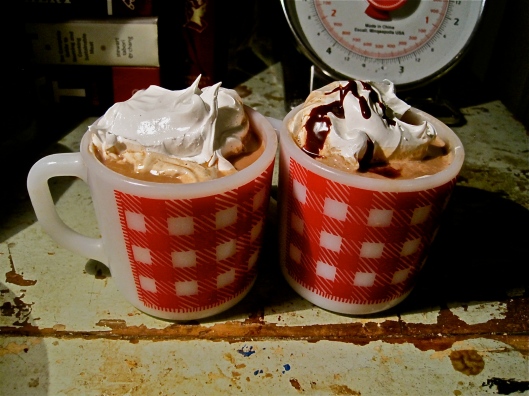
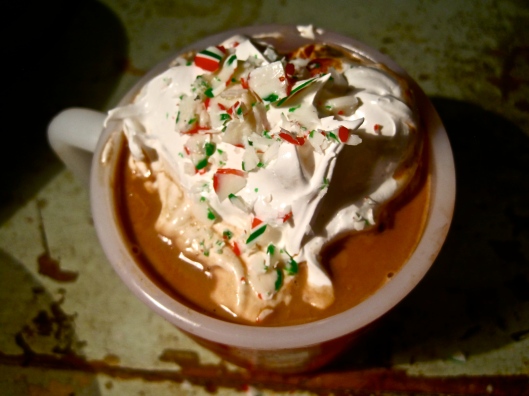
This is the perfect thing for a cold day like today. Time to get a thermometer and make some fluff.
Do it, Ante! You will NOT regret it.
Cara, great “piece”. I could certainly drink that today-it’s about 10 degrees.It’s very interesting that the ganache can last for that time. It might be a “fuss” at the start but having it available for almost the whole winter is a bonus.
I remember the book and your critique of it is as I remember.
Keep up the good work,
Seymour
Thank you, Seymour! As always, your comments are a joy. The ganache is a bit “fussy” but totally worth it for a whole winter’s worth of enjoyment!
DELISH!!!!
darn right!
First of all: omg those mugs. Second of all: I am going to make one of the above commenters (Ante) make this for me this weekend.
My dad used to give me a new Chris Van Allsburg every year for my birthday, and this year when I was home for Christmas I found that my mom has been buying him first editions of all of those books for his collection. Which made me a little teary.
Keep up the great work.
Whenever you tell me things about your mom and dad I get weepy for really inexplicable reasons. I just love them so much. Also, the mugs say “Irene” Steve” and “John” on them in blue block letters. I REALLY had to restrain myself from buying the ones that said “Grandma” and “Grandpa”–seemed impractical.
THAT FLUFF
MAKE IT, ALEXANDER. MAKE YOUR DREAMS COME TRUE.
That is brilliant about the ganache! So much better than any little packet of powder. Marshmallow fluff looks divine too. I would have thought to make marshmallows, but not fluff. Brilliant!
I remember Chris Van Allsburg’s books fondly. I guess that as a kid, I never considered them to be creepy. But when I think of some of his others like Jumanji, they really are.
Let me just say that I was creeped out by pretty much EVERYTHING as a kid. Re-reading this one as an adult, though, I maintain that this one really is creepy. Beautiful, but creepy.
I don’t even really like hot chocolate but your description of it and the recipe left me thinking I was going to make it my weekend project. What a fun drink to have around for guests too. Thanks for sharing!
This is seriously good hot chocolate, I think it could convert even the non-believers! If you make it let me know what you think!
I love your work as always. That scene in Polar Express is one that has stayed with me since I was a kid, too. I never found the book eerie, though, but certainly a bit tense and mysterious. It excited the crap out of me as a kid.
Thank you, Sarah! I’ve got your plum cobbler bookmarked, can’t wait to make it!
This looks amazing and decadent and like something I need to make right this second!
I think you do need to, Eboni!
This is amazing!!!!
YUM!
You are!
Great memories, Cara…
The best! Love you, noodle!
cara this looks INCREDIBLE!
Thank you, Sarah! Loving all the updates on your blog, you’re the best.
I am wishing for very cold nights so I can indulge in this treat.
I’m wishing that for you, too! Not TOO cold, though. We had a 10 degree day here recently and I wouldn’t wish that on anyone…
I just discovered your blog and am in love. What a perfect combination: books and baked goods. Thank you for such beautiful writing and ideas!
Thank you, Becca! Just spent a good hour perusing your lovely blog. What a fun adventure you and your beautiful family are having!
This would give me the most beautiful indigestion in the world! I wannittt!!<3
Pingback: Goodbye Prague « Blue Eyed Sight
I’ve never read the book, but I must confess the dead-eyed computer Tom Hanks scared the pants off of me in the movie. Good lord, he was terrifying! And you’re right, the concept of children leaving their homes at night with a strange man is terrifying too… but must be totally thrilling to a kid, especially a kid crazy about trains!
This hot chocolate looks so amazing right now– I just got in from a frigid walk with the dog this morning and the feeling is just returning to my fingertips. I love the idea of marshmallow fluff as a topper… and as I have a huge weakness for whipped eggs & sugar, I know I’ll be saving this recipe to make very soon. Gorgeous!
I remember being completely creeped-out by this one as a kid, too (along with that film, The Snowman) – it always felt like there was something a little sinister and hollow at the core (if you can talk about something being hollow at its core…). Hot chocolate looks gorgeous, though, of course – I love how dark the photos are, feels like storytime before bed!